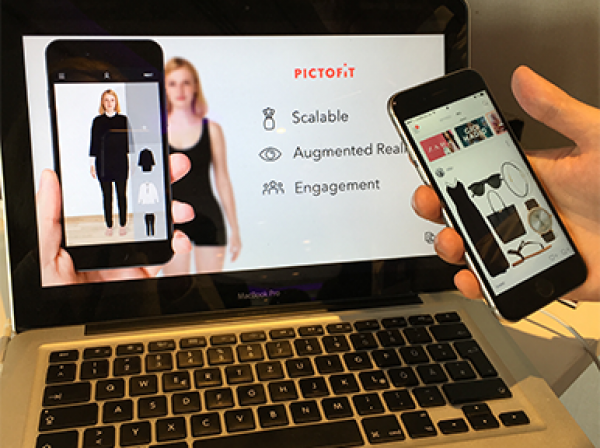Technology is moving from wearables on our wrists to the rest of our bodies as it impacts on the fashion industry. However, the result is not just in the design with FashionTech but also RetailTech concentrating on how fashion is sold and the user buying experience.

The recent Decoded Fashion (London) conference looked at how technology is impacting the fashion and retail industries. Chaired by Jessica Michault, her opening “There’s never been a better time to be a fashion tech translator” reminded me of Trina Watt’s opening line at FashionTech Berlin – “Hi, I’m Trina Watt and I’m a translator”. Yes, there’s great tech out there but key is translating it into messages the end user will understand. Today’s consumer wants to know how that cool piece of fashion or retail technology will benefit them personally. Not surprising the most used word at Decoded Fashion was ‘personalisation’.
Today’s consumer is an ‘always on’ consumer using their smartphone as the remote control for their lives. They want to shop how they communicate – quickly, online and often whilst on the move. The key is to tap into this for shopping making it more relationship led commerce. Some brands have already started – Net-a-Porter recently sold a £65,000 watch with the consumer and personal shopper messaging through WhatsApp. Harvey Nichols has introduced a Live Chat option enabling the customer to work with a stylist transporting the them into the store via their mobile device rather than physically having to go there.
Similarly, dressing room apps are making the buying journey easier and more personalised. Winner of the Fashion Futures Award, Pictofit uses Augmented Reality, enabling the customer to not only browse the collections of online retailers via their smartphones, but also try on the clothes. After uploading a photo of yourself you can mix and match various pieces and even change the background to something more relevant to the outfit. Then when you’ve decided what you want, it’ll take you straight through to the individual store for purchasing. This really takes it from just a screen experience to a personal, immersive experience.
Brands need to use the data the collect to provide personal, informative content. Very.co.uk does this with over a million variations of its homepage using data and past browsing experience to provide a truly personal experience. Amazon’s Echo Look also uses data learning (along with advice from fashion specialists) to help you decide what to wear.
Content is also King for brands wanting to connect with their audience and build brand loyalty. Today’s Millennials find out about things via influencers, friends and social content but for it to work, brands need to be transparent. Consumer trust is hard to get but easy to lose. Brands need to constantly create informative and engaging content for various platforms which delivers end user value so continue interacting after purchase.
It may seem like today’s world is mobile first but could it be mobile only? The general consensus at the conference was that stores remain critical but the online and offline presence must match – same vibe, same atmosphere. Today’s customer wants a personalised brand experience not just a shopping experience. Technology opens up so many opportunities for this but as new innovations continue to change the landscape, brands must be prepared to change and adjust in order to continually connect with their customers.
